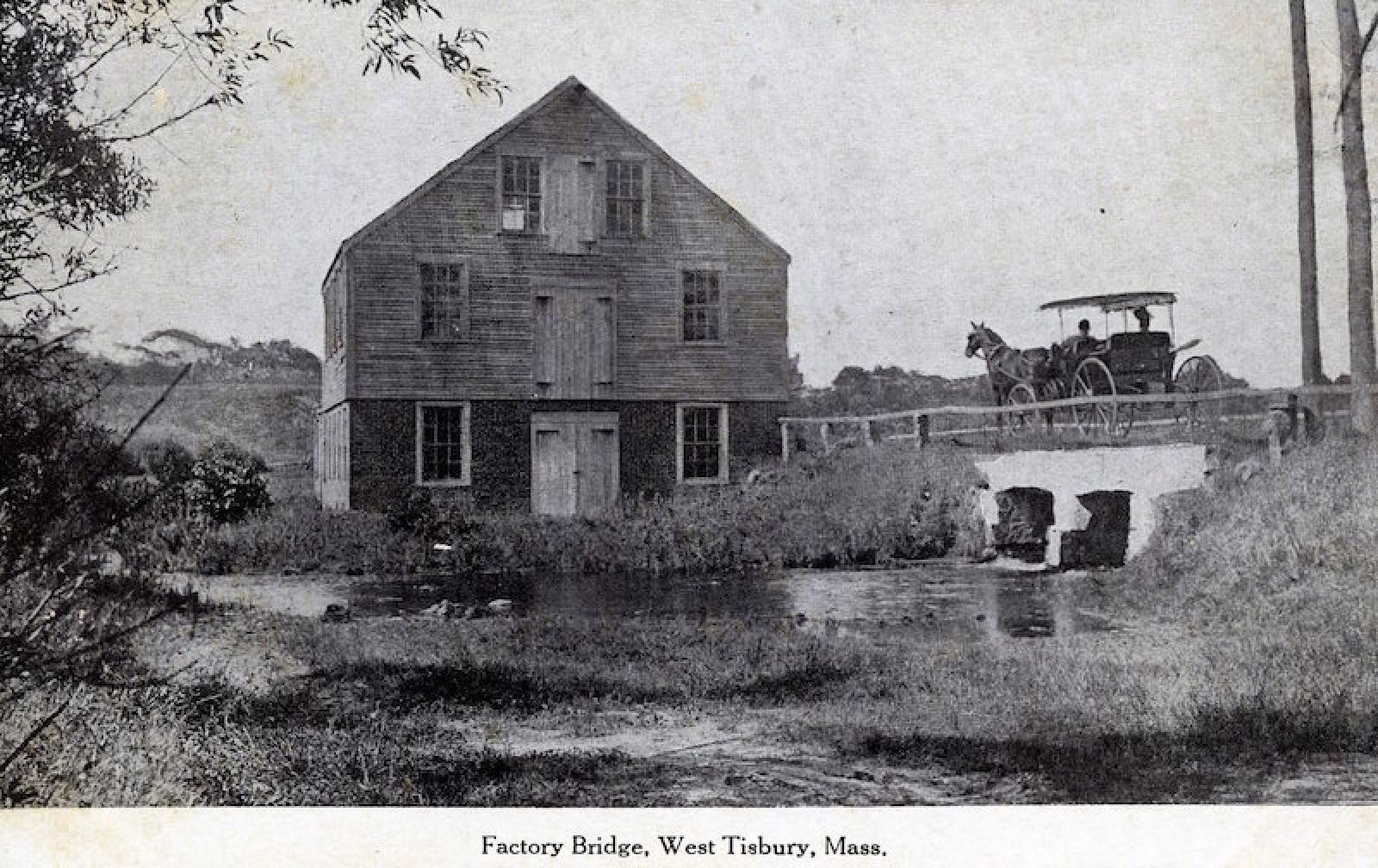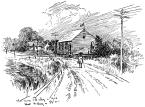From the Sept. 6, 1968 edition of the Vineyard Gazette by Eleanor Ransom Mayhew:
On this 30th year of our occupancy of the Old Mill, Mrs. Roberts has asked me to give a bit of background, both of the site itself and of the process by which the Garden Club acquired it. To accomplish this, I decided to use primary accounts in the latter instance and will begin with a story which appeared in the New Bedford Sunday Standard Times, Sept. 26, 1937.
“Standing idle, desolate, and slowly rotting and breaking into oblivion in this old village is the last Monument of a Vineyard industry, once thriving and essential, now dead.
“The landmark, recalling Vineyard industrial history, is an old mill on the south side of the Edgartown Road by the Old Mill Pond just outside the village.
“For years historically-minded Vineyarders had considered the renovation of the old construction, but all their talk brought no result until late this summer when the Martha’s Vineyard Garden Club took active interest in the mill.”

Year Book - 1938.
The president’s report.
“Our Garden Club Centre is a success! We all love the Old Mill, its location on the murmuring brook, its possibilities, its dignified and sturdy stability.”

Year Book - 1941.
Report of Agnes D. Meikleham.
Five years ago we entered, as a club, into a contract to acquire the Old West Tisbury Mill. The purchase was made easy for us by Donald R. Campbell, the owner, and by leasing it for five years at $100 a year, with an option to renew that lease at the end of the period, or buy it outright.”

Now a bit of history of the mill. The mill site goes back to Governor Mayhew, who in 1651 sent off to his old friend John Winthrop in Connecticut for a millwright, stating “We have greate want of a mill.” Since this site represented the closest waterpower to Edgartown, and the brook has always been known as the Old Mill River, there can be little doubt that here stood the first grist mill on the Vineyard.
However, the first written record of a mill at this location is in a deed of sale from Salvanus Cottle to Samuel Cobb dated Aug. 11 1760. Several subsequent transfers of the property are recorded, the most important in 1809 to David Look who forthwith converted the building into a woolen mill. He died in 1837, and in 1845, his widow Hannah sold it to Capt. Thomas Bradley, a Holmes Hole merchant for $1800.
Bradley replaced what was described as the “dilapidated Look mill” with the present edifice the following year and operated it as a factory making fine satinents and kerseys until 1859 when it was purchased by Henry Cleveland, a whaling captain who had broken a leg ashore, thus ending his career ay sea.
Donald R. Campbell was Cleveland’s grandson, and, at the Garden Club’s silver anniversary in 1949 he recalled, “My grandfather knew nothing about weaving, so he hired an Englishman named Howe to run the mill. Howe was a good weaver, but he was intemperate, to put it mildly, and frequently had to be loaded onto a wagon, stiff as a log, and carried home at night.
“He also must have been a tough man to work for, judging by the verse I remember was scribbled on one of the mill walls, and ran ‘If anyone wishes to take up their cross, just work in this mill with Howe for a boss.’”
Capt. Thomas G. Campbell, also a whaleman, took the mill of his father in law’s hands in 1874, but never ran it save for a few days in fall when the neighbors brought in their clip to be made into rolls. “I can just about recall,” Mr. Campbell related, “the last time it was run. I was just about 5 years old. The next year, 1891, a freshnet tore out the sluiceway and several years later my mother sold the machinery for scarp.” The bookkeeper’s desk in the weaving room has H. C. cut into it, so there is no mistaking the original owner. The spool-legged table dates from early mill days also. The old factory implements have recently been identified by the curator of the Marrimac Valley Textile Institute.
A framed sample of satinet made in the mill and used chiefly for whalemen’s pet jackets hangs upstairs. This was presented by the late Clara Look Athearn. The candle sconce with reflector was once part of the mill equipment and came from Mr. Campbell. The daybook covering mill business from 1865 to 1871 was given by Daniel Manter.
Other of the furnishings include the pine settee designed and executed by the late William E. Dugan, and a breadmaking chest, donated by Mrs. Howard Butcher Jr..
Thirty years ago, there was only one other Garden Club in the state with a centre. How many there are today I would not venture to say, though I am convinced none has a home of greater interest historically, or with a lovelier location.
Compiled by Hilary Wall
library@mvgazette.com






Comments
Comment policy »